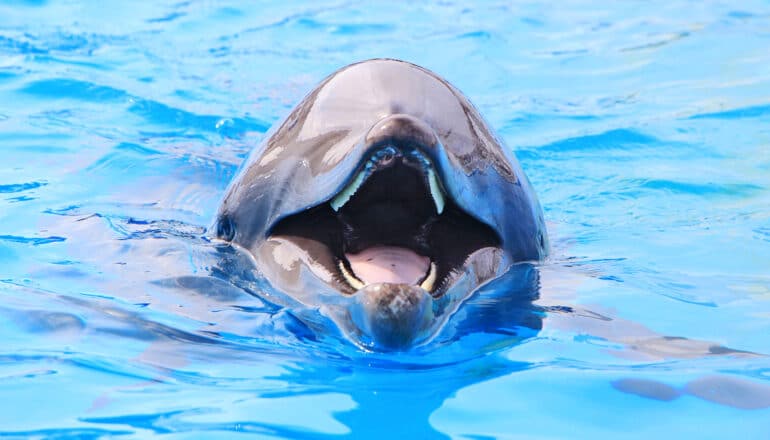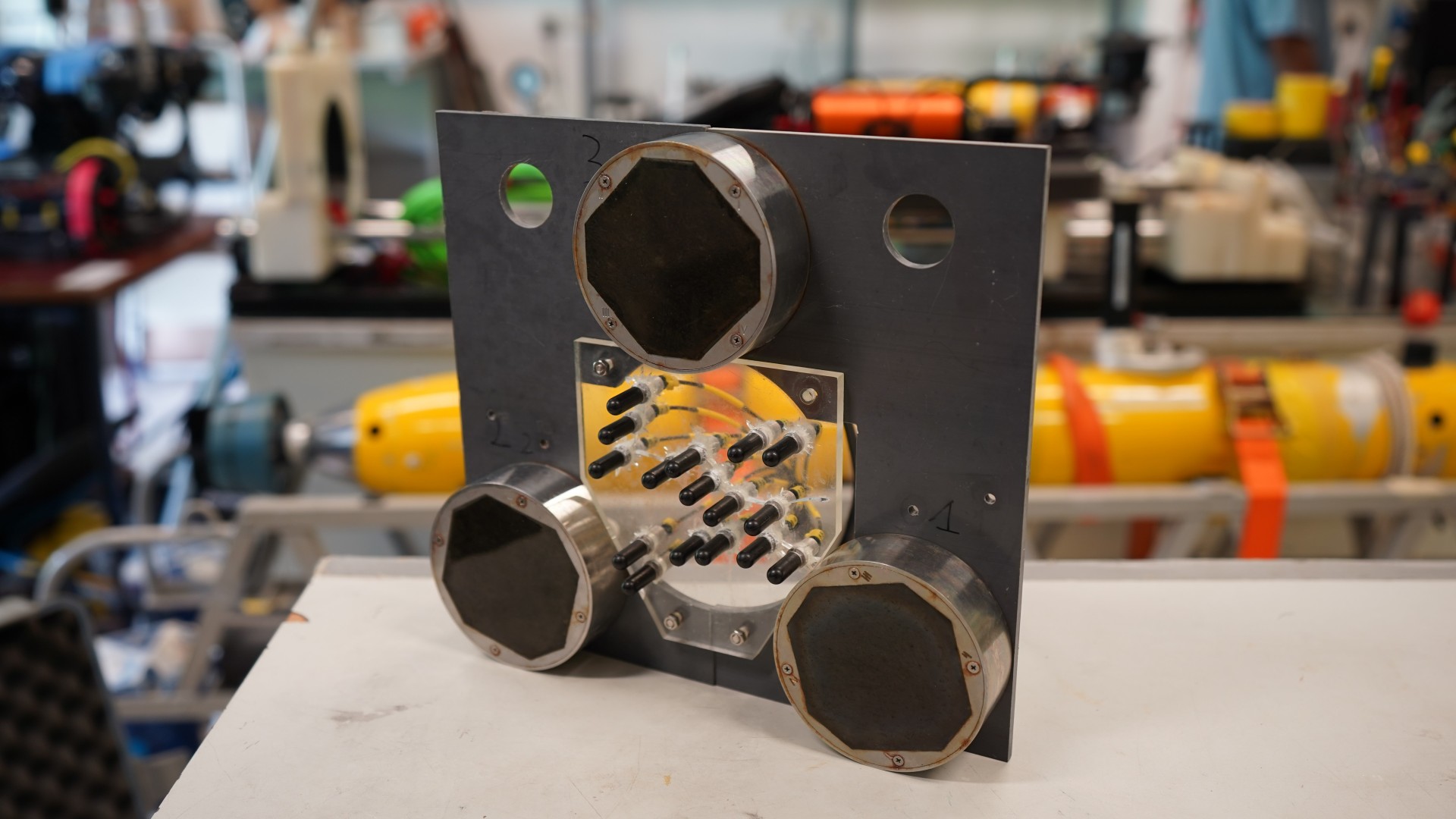
Researchers have developed a dolphin-inspired compact sonar with a new echo processing method.
The sonar allows for clearer visual imaging underwater compared to the conventional signal processing method of visualizing sound echoes.
Underwater imaging sonars are an essential technology for ocean exploration. Biomimetic sonars inspired by marine mammals such as dolphins are an emerging development in this field.
The new sonar incorporates information on the sparsity of objects which helps interpret sound echoes better. This processing method is based on the hypothesis that dolphins use prior information about their environment, apart from broadband sound pulses, to interpret their echoes.

Compared to other sonars of similar sizes and purposes, the new sonar provides a better trade-off between sonar-image clarity, the number of sensors, and the size of the sensor array used. Conventional methods of processing sound echoes usually break down when sensors are too few or spread out.
However, the new sonar processing method will be able to extract information and still yield image clarity in such a scenario.
Scientists at the National University of Singapore observed that dolphins were able to acoustically scan objects underwater and pick matching objects visually, demonstrating that a dolphin’s sound echoes emitted off an object contain information of the object’s shape. They then recorded dolphin echoes emitted when scanning an object underwater.
Based on their observations, the team built a biomimetic sonar that replicates a dolphin’s sonar. The sonar, which is about 25 cm (about 10 inches) in width and around the size of a dolphin’s head, is designed to emit sharp, impulsive click sounds similar to a dolphin’s echolocation.
Three transmitters are used to send sounds from different directions. The researchers then processed the sounds from both the dolphin and their sonar to visualize what the echoes revealed about the object shape.
To complement the hardware, the team came up with an innovative software that allowed the sonar to improve the visualization of the echoes.
Based on the hypothesis that dolphins use prior information to process their echoes, the researchers incorporated the concept of sparsity into the sonar’s software. This assumes that out of the space scanned, only a small percentage is occupied by the object.
“Using prior information, such as the idea of sparsity, is intuitive. It is something humans do all the time—we turn our understanding of reality into expectations that can speed up our inferences and decisions,” says Hari Vishnu, senior research fellow at NUS Tropical Marine Science Institute (TMSI).
“For example, in the absence of other information, the human brain and vision system tend to assume that in an image, the light on an object will be falling from above.”
The researchers demonstrated the effectiveness of the software when it was able to visualize information from a dolphin’s sonar echoes when scanning an object, as well as sonar signals produced by their compact sonar.
A conventional approach of processing both sonar echoes resulted in noisy images. However, the new processing approach gave better resolution and therefore sharper images. The software is also able to generate visualizations with a mere three clicks from the sonar, thus allowing it to be operationally fast.
The new sonar processing method could have potential benefits in underwater commercial or military sonars. For example, it could be used to scan the seabed to search for features that can be used to aid navigation. The sonar’s compactness also makes it suitable to be mounted on underwater robots for ocean exploration.
The study appears in Communications Engineering.
Source: NUS
The post Dolphins inspire sonar for clearer underwater images appeared first on Futurity.
from Futurity https://ift.tt/R6qbcTh
No comments:
Post a Comment